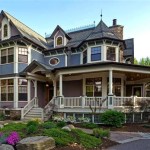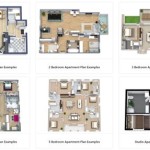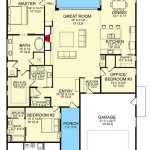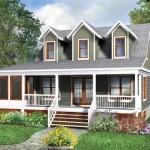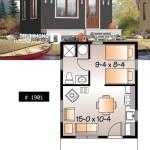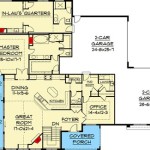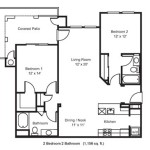Passive Solar House Plans for Cold Climates
Designing a home for a cold climate presents unique challenges. Balancing comfort, energy efficiency, and affordability is crucial. Passive solar design offers a sustainable and cost-effective approach to managing heating needs in frigid conditions. By strategically incorporating solar energy principles, passive solar homes can significantly reduce reliance on conventional heating systems, leading to lower energy bills and a reduced environmental footprint.
Maximizing Solar Gain
The core principle of passive solar design is to harness the sun's energy to heat the home naturally. To achieve this, careful orientation and window placement are critical. In cold climates, south-facing windows are ideal for maximizing solar gain. Large windows, often called "solar windows," allow maximum sunlight penetration during the winter months. These south-facing windows should be strategically positioned to avoid direct summer sun, as excessive heat can become uncomfortable. Consider incorporating overhangs or deciduous trees that provide shade in summer while allowing sunlight to reach the windows in winter.
Solar gain can be further optimized with the use of strategically placed thermal mass materials. These materials, such as concrete, brick, or stone, absorb and store solar heat during the day and release it slowly at night, helping to maintain a comfortable temperature even when the sun sets. Placing thermal mass walls and floors near south-facing windows will enhance their heat absorption capacity. Consider using materials with high thermal mass for interior finishes, such as tile, ceramic, or plastered walls, rather than lightweight materials like wood or drywall.
Minimizing Heat Loss
While maximizing solar gain is essential, minimizing heat loss is equally crucial in cold climates. Proper insulation is crucial. Invest in high-performance insulation in walls, floors, and ceilings. Consider using foam insulation, spray foam insulation, or fiberglass batts for optimal thermal resistance. Focus on air-tight construction to prevent drafts and heat loss. Carefully seal all cracks and gaps around windows, doors, and other openings.
Window glazing can also play a significant role in heat retention. Double- or triple-paned windows with low-emissivity coatings are highly efficient in reducing heat loss through the glass. Additionally, consider using operable windows strategically. For example, windows on the north side of the home can be smaller to minimize heat loss while offering natural light.
Designing for Passive Heating
In addition to maximizing solar gain and minimizing heat loss, passive solar design incorporates strategies to passively heat the home. These strategies include:
Sunspaces
Sunspaces, also known as solariums or greenhouses, are enclosed spaces attached to the home that act as a buffer zone. They are typically glazed to maximize solar gain and can be designed to passively preheat incoming air before it enters the living spaces. The heat absorbed by the sunspace can be transferred to the home through vents or by circulating air with a fan. Sunspaces can also serve as a comfortable living space during the colder months, providing a naturally warm environment.
Trombe Walls
Trombe walls are a passive solar heating system that utilizes a south-facing wall with a dark, heat-absorbing surface. A layer of air is trapped between the wall and an insulated glazing panel, allowing for natural convection. Solar radiation heats the dark surface, which, in turn, heats the air behind the glazing. This heated air rises and flows into the living space through vents at the top of the wall. At night, the thermal mass of the wall continues to release heat, providing a comfortable temperature inside the home.
Other Considerations
Passive solar design in cold climates also involves thoughtful considerations beyond solar gain and heat loss. These include:
Ventilation: Proper ventilation is crucial for managing humidity and removing excess heat during the warmer months. Consider incorporating efficient ventilation systems, such as heat recovery ventilators, to ensure fresh air circulation while minimizing heat loss.
Landscaping: Strategic landscaping can enhance the passive solar performance of a home. Planting deciduous trees on the south side can provide shade in summer while allowing sunlight to reach the windows in winter. Evergreen trees or shrubs planted on the north side can act as windbreaks, reducing heat loss due to wind.
Water Heating: Incorporate solar hot water systems to supplement or replace electric or gas water heaters. Solar panels on the roof can effectively heat water using the sun's energy.

Passive Design Strategies For Cold Climate

Passive Design Strategies For Cold Climate

The Next Generation Of Passive Solar For Cold Climates Construction

Passive Solar House Design Ecoliv

Passive Solar House Design Homes Kept Warm By The Sun Ecohome

Passive Solar House Design

Diy Passive Solar House Plans To Design Details Ecohome Green Building Guide Part 1

A Simple Design Methodology For Passive Solar Houses
Passive Solar Energy Efficient Home The House On Hill Coveney Browne Architects

Passive Heating Yourhome


